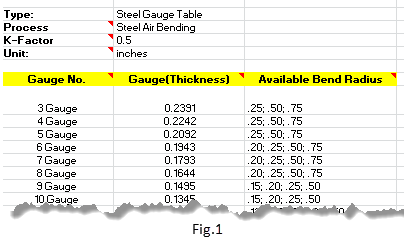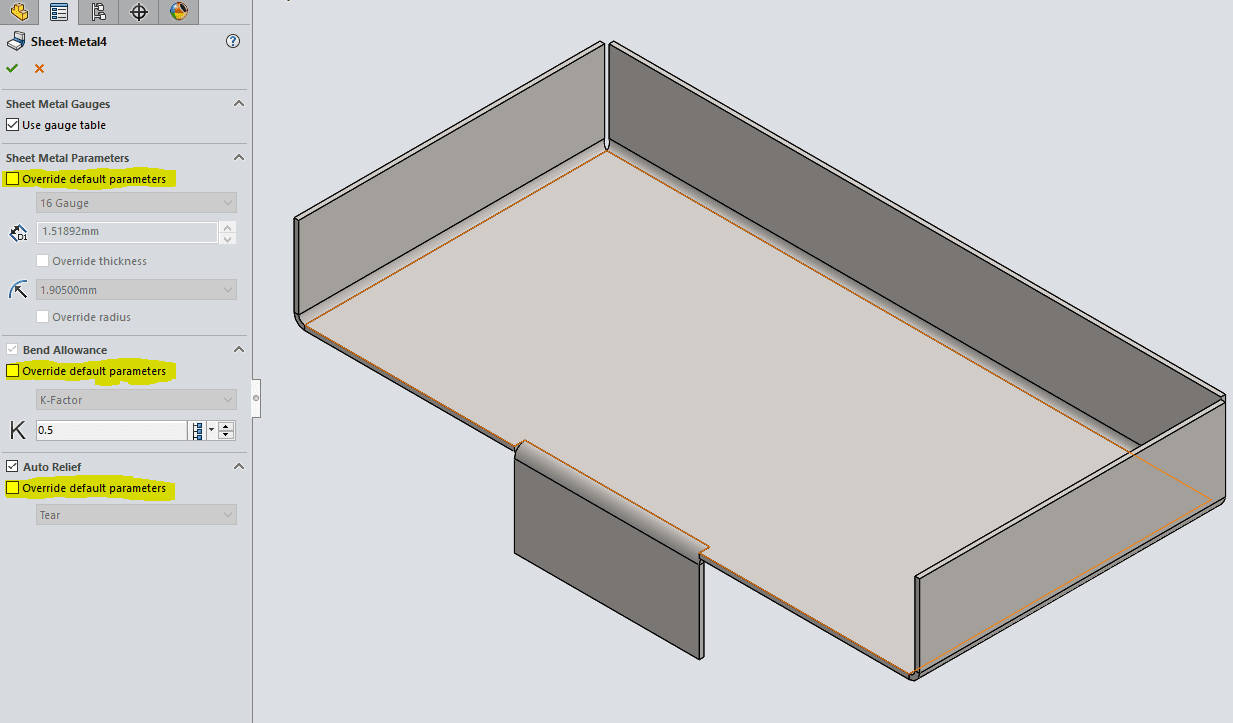If you want a body to have a different thickness from the part thickness you edit the sheet metal body feature check the override default parameters and enter the desired thickness fig.
Change global sheet metal thickness solidworks.
Changing global variables with the modify dialog box to change dimensions linked to global variables using the modify dialog box.
Repeat for as many dimensions as needed.
Change and manage than linked values.
To use a global variable to link dimensions.
Set the sheet thickness and default bend radius.
For example 20 gauge equals 0 0359 in.
In the featuremanager design tree click a feature with a dimension linked to a global variable.
In this tech tip learn how to convert the thickness value into a solidworks sheet metal gauge value.
Create a global variable in the equations dialog box or the modify dialog box for dimensions.
In select table select a gauge table to use or click browse and browse to a gauge table.
But it doesn t appear possible to change the sheet metal thickness of a part started with base flange after the fact.
Double click the dimension then in the modify dialog box type equal sign.
So how can.
Select the name and press delete you cannot delete a name used by another dimension.
You must enter the equal sign to assign a global variable to the dimension.
Type a name for the global variable.
Select a face as the fixed face for the sheet metal part.
You can delete unused dimension names from the name list.
When you change the value of a global.
The model opens in sketch mode.
Select keep body if you want to keep the solid body to use in another convert to sheet metal feature.
Appears with the dimension in the graphics area and in the equations dialog box.
A common practice in industry when working with solidworks sheet metal is to show thickness as gauge value.
In the manufacturing industry sheet metal thickness is defined by a pattern but in solidworks you must define a value in inches or millimeters.
Set two or more dimensions equal to the global variable.









